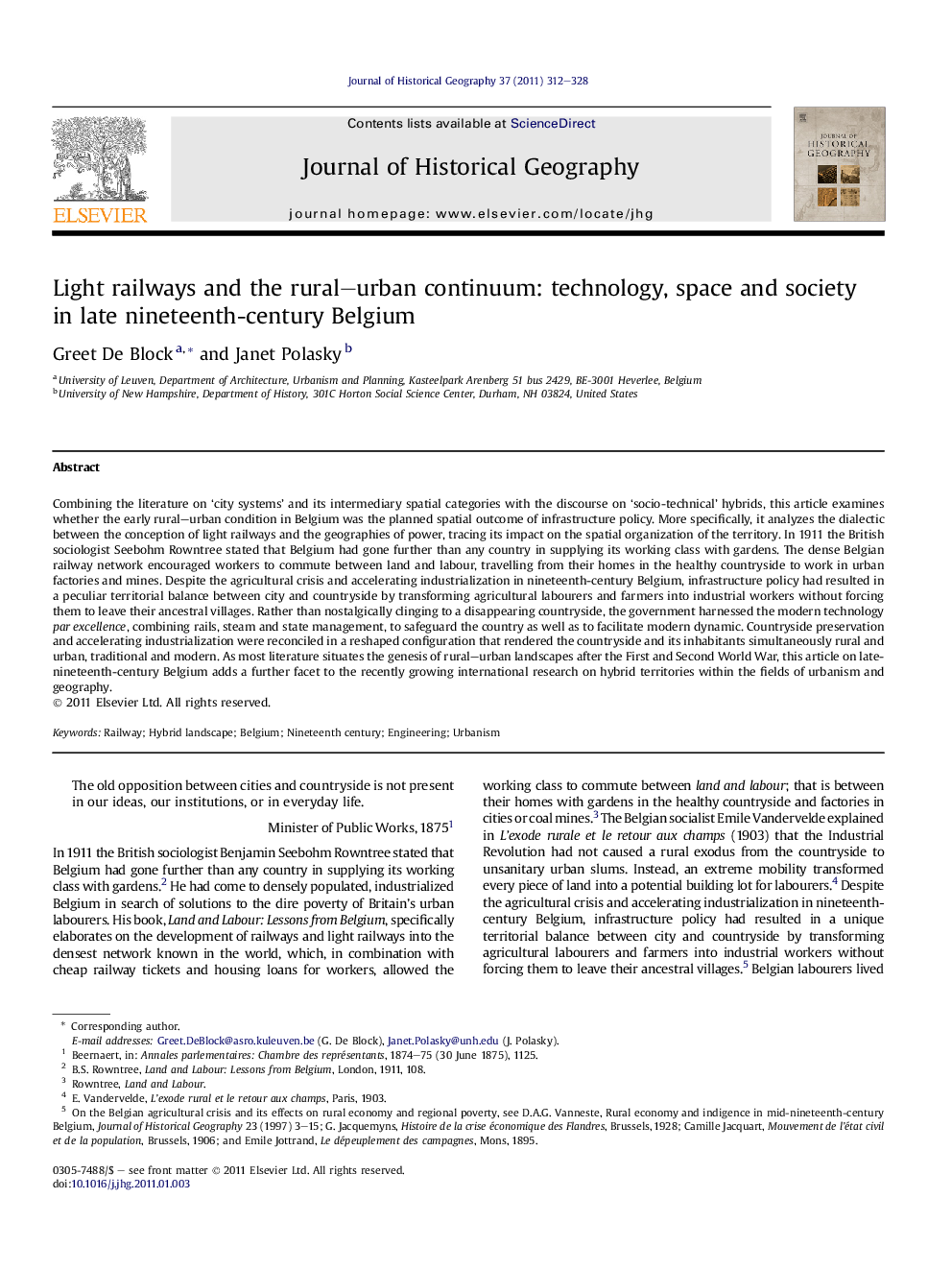| کد مقاله | کد نشریه | سال انتشار | مقاله انگلیسی | نسخه تمام متن |
|---|---|---|---|---|
| 1039450 | 944299 | 2011 | 17 صفحه PDF | دانلود رایگان |

Combining the literature on ‘city systems’ and its intermediary spatial categories with the discourse on ‘socio-technical’ hybrids, this article examines whether the early rural–urban condition in Belgium was the planned spatial outcome of infrastructure policy. More specifically, it analyzes the dialectic between the conception of light railways and the geographies of power, tracing its impact on the spatial organization of the territory. In 1911 the British sociologist Seebohm Rowntree stated that Belgium had gone further than any country in supplying its working class with gardens. The dense Belgian railway network encouraged workers to commute between land and labour, travelling from their homes in the healthy countryside to work in urban factories and mines. Despite the agricultural crisis and accelerating industrialization in nineteenth-century Belgium, infrastructure policy had resulted in a peculiar territorial balance between city and countryside by transforming agricultural labourers and farmers into industrial workers without forcing them to leave their ancestral villages. Rather than nostalgically clinging to a disappearing countryside, the government harnessed the modern technology par excellence, combining rails, steam and state management, to safeguard the country as well as to facilitate modern dynamic. Countryside preservation and accelerating industrialization were reconciled in a reshaped configuration that rendered the countryside and its inhabitants simultaneously rural and urban, traditional and modern. As most literature situates the genesis of rural–urban landscapes after the First and Second World War, this article on late-nineteenth-century Belgium adds a further facet to the recently growing international research on hybrid territories within the fields of urbanism and geography.
Journal: Journal of Historical Geography - Volume 37, Issue 3, July 2011, Pages 312–328